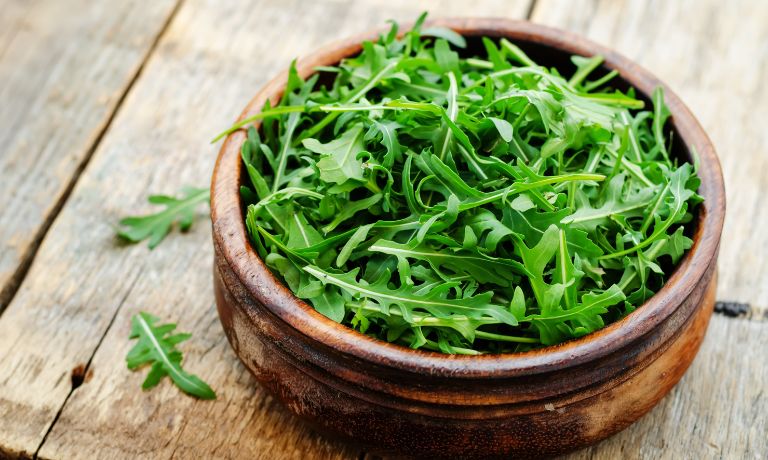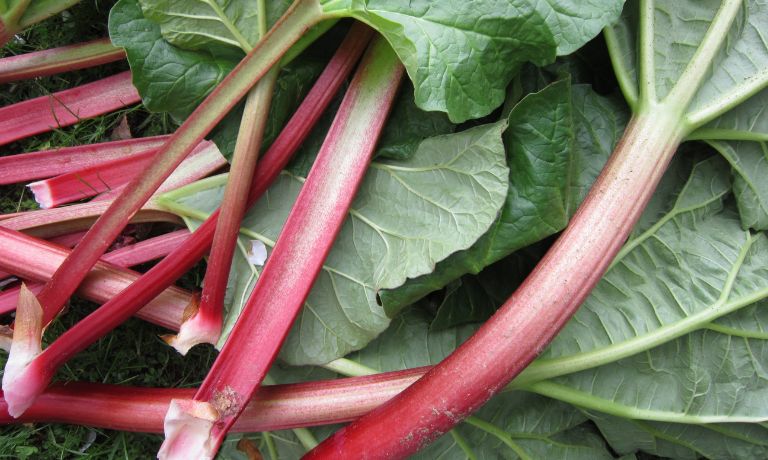Are you looking for a tasty and unique ingredient to take your cooking game up a notch? Sorrel may be just what you need.
This vibrant red edible plant has been used in traditional Caribbean, African, Mediterranean, and Middle Eastern dishes for centuries.
However, not everyone can get their hands on this delicious culinary ghost pepper.
Luckily, there are options to substitute for sorrel that offer similar flavors and textures – check out the exciting possibilities available as substitutes for sorrel!
What Is Sorrel?
Sorrel is a tart, citrusy, and slightly bitter-tasting herb from the Rumex acetosa plant.
The leaves are rich in vitamins A and C, calcium, potassium, and magnesium.
It is often used fresh in salads, but it can also be cooked or dried in dishes like soups, stews and sauces.
Sorrel is often used as a garnish or to add a tart zing to dishes like spinach soup or lemon risotto.
It has also been used in sauces for fish and poultry, and it can be added to stews and casseroles for an extra flavor boost.
Sorrel pairs particularly well with root vegetables like potatoes, carrots, and parsnips.
You can also use sorrel to make herbal tea or added to jams and jellies for a unique flavor.
Sorrel is an easy-to-grow herb that requires little maintenance, making it a great addition to any backyard garden.

Substitutes For Sorrel
Sorrel is a tangy, flavorful herb commonly used in soups, salads, sauces and other dishes.
However, if you don’t have access or need some options to substitute for sorrel for any reason, here are some suggestions:
Arugula
Arugula, or rocket, is a leafy green vegetable with a slightly peppery and bitter flavor.
It is commonly used in salads, sandwiches and other dishes.
Arugula can be added to fresh salads for an extra punch of flavor or cooked into pasta and risotto to add a unique twist.
The leaves can also be sautéed or added to soups and stews.
Arugula pairs well with other vegetables, meats and cheeses, making it a versatile ingredient in many dishes.
It is also a great addition to pizzas, adding an extra layer of flavor to make the dish stand out.
Arugula is also high in fiber and vitamins A and K, making it a nutritious and delicious addition to any meal.

Rhubarb
You can use Rhubarb to substitute for sorrel. It is a tart, tangy vegetable used in cooking for centuries.
It grows on perennial plants and is usually harvested in the spring.
The stalks of rhubarb are edible. However, the leaves should not be consumed as they contain oxalic acid, which can be toxic when ingested.
Rhubarb is most commonly served cooked with sugar to bring out its sweet-tart flavor.
It’s a popular ingredient in pies, crumbles, jams and sauces.
Rhubarb can be used to make syrups and cordials. Some people eat it raw as a snack or add it to smoothies for extra flavor.
It is rich in vitamins and minerals such as Vitamin K and calcium.

Spinach
Spinach is a leafy green vegetable in the same family as beets, Swiss chard, and quinoa.
It’s an excellent source of vitamins, iron, calcium, fiber, and other essential nutrients.
Spinach can be eaten raw in salads or cooked in soups, lasagna, omelets, and casseroles. It is often used as a wrap or a pizza topping.
Spinach can also be incorporated into smoothies and juices for added nutrition.
When cooked, the leaves become soft and silky in texture, making them an ideal addition to many dishes.
Adding spinach to recipes boosts their nutritional value and adds something special to each dish with its unique flavor and texture.
Spinach is a versatile vegetable that can be cooked in various ways, making it a great addition to any meal.

Sumac
Sumac is a deep red, tart, tangy spice that adds flavor and color to food.
The flavor of sumac ranges from sweet to sour, depending on the variety of sumac used.
It is often used as a seasoning in Mediterranean and Middle Eastern cuisine, where it’s known for its lemony bite.
You can add sumac to rubs for meats or vegetables, use it to season fish or poultry, sprinkle it on salads and soups for a sour kick.
It can also be blended with olive oil and garlic to make a zesty dressing or dip, and even added to baked goods like bread and cakes.
Sumac is also an ingredient in the popular Middle Eastern spice blend za’atar.
It is so versatile that it can be used in sweet and savory dishes, adding a bright flavor to any meal.

Mustard Greens
Mustard greens pertain to the Brassica family and are classified as leafy green vegetables.
They have a close relationship with kale, cabbage, and Brussels sprouts.
They have been eaten for centuries in many different cultures worldwide. The leaves are slightly bitter and have a crunchy texture.
The most common way mustard greens are used in cooking is to sauté them with garlic and olive oil.
They can also be added to soups, stir-fries, and curries.
Some other popular ways to enjoy mustard greens include adding them to salads, grilling them with other vegetables, and making a pesto sauce.
The leaves can also be pickled or used to make delicious smoothies. You can use them to substitute for sorrel.

FAQs
Is Spinach Similar To Sorrel?
Yes, spinach and sorrel belong to the same family of plants.
While they are both leafy greens, they differ in taste and texture.
Spinach has a milder flavor and is more tender than sorrel, with a tart citric flavor and a slightly chewy texture.
Is Basil Similar To Sorrel?
Basil and sorrel are members of the same family but have different flavor profiles.
Basil has a sweet, aromatic flavor while sorrel is tart and slightly acidic.
Both herbs can add flavor to dishes, but basil is more commonly used in Italian cooking and sorrel in French cuisine.
Does Lemon Taste Similar To Sorrel?
No, Lemon and Sorrel do not taste similar. While both are citrus fruits, they have distinctively different flavors.
Lemon is tart and acidic, while Sorrel has a sweet-sour flavor with peppery notes.
Additionally, the texture of Lemons is juicy and firm, while that of Sorrel is dry and crunchy.
Conclusion
Sorrel is an herb with a tart flavor and rich in vitamins and minerals.
It can be used to add a tangy kick to dishes or as a garnish but if you don’t have access to it, there are several options that can substitute for sorrel.
Arugula, rhubarb, spinach, sumac and mustard greens are all good alternatives that you can use in various dishes.
Each of these ingredients has its unique flavor and texture, so experiment and find out which one best fits your dish!
5 Best Substitutes For Sorrel

- Arugula
- Rhubarb
- Spinach
- Sumac
- Mustard Greens
-
Choose your ideal substitute from the list above.
-
Follow the cooking guidance for your chosen substitute with the appropriate ratio of ingredients.

